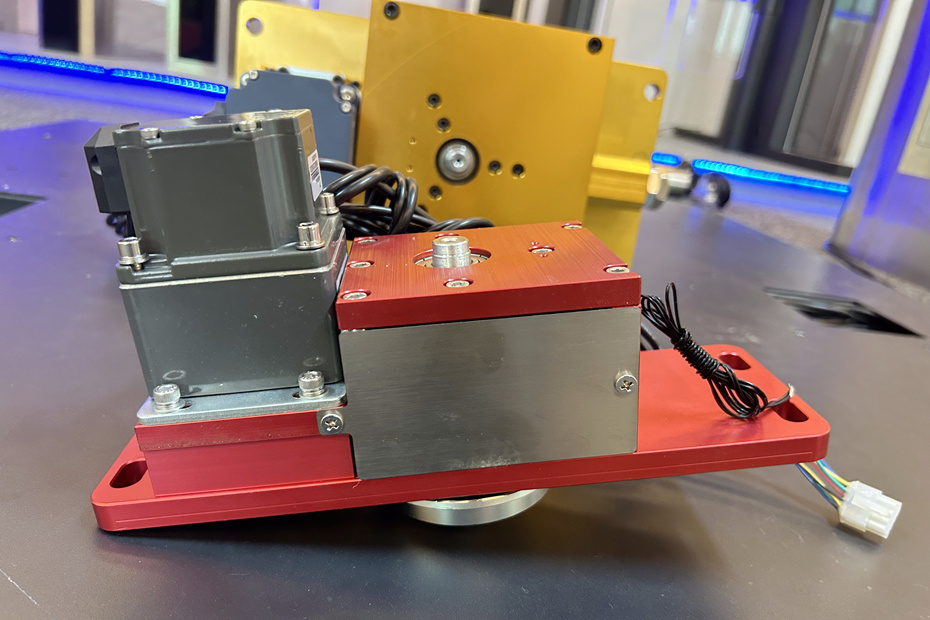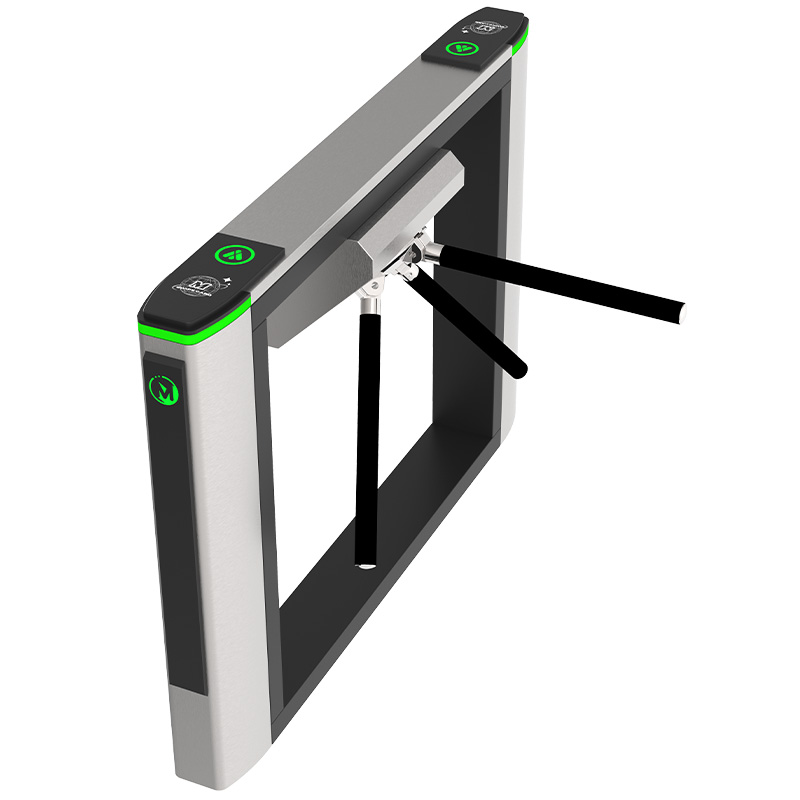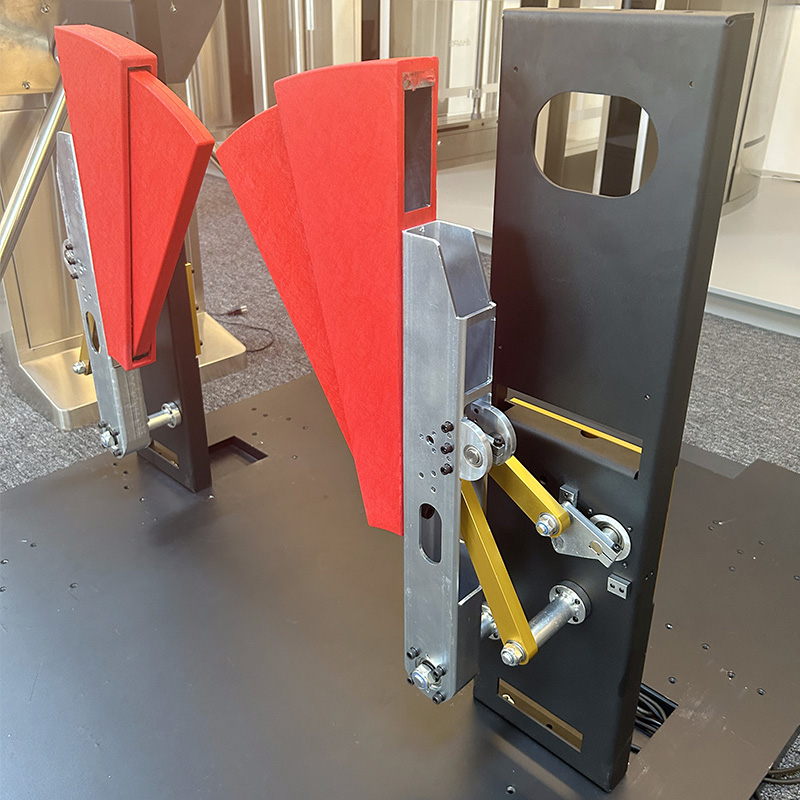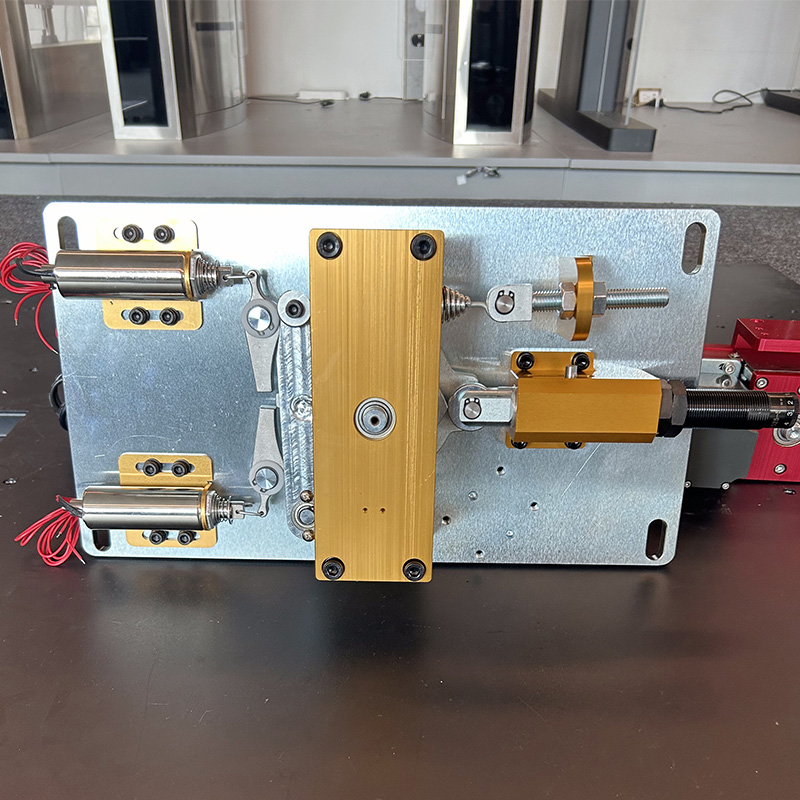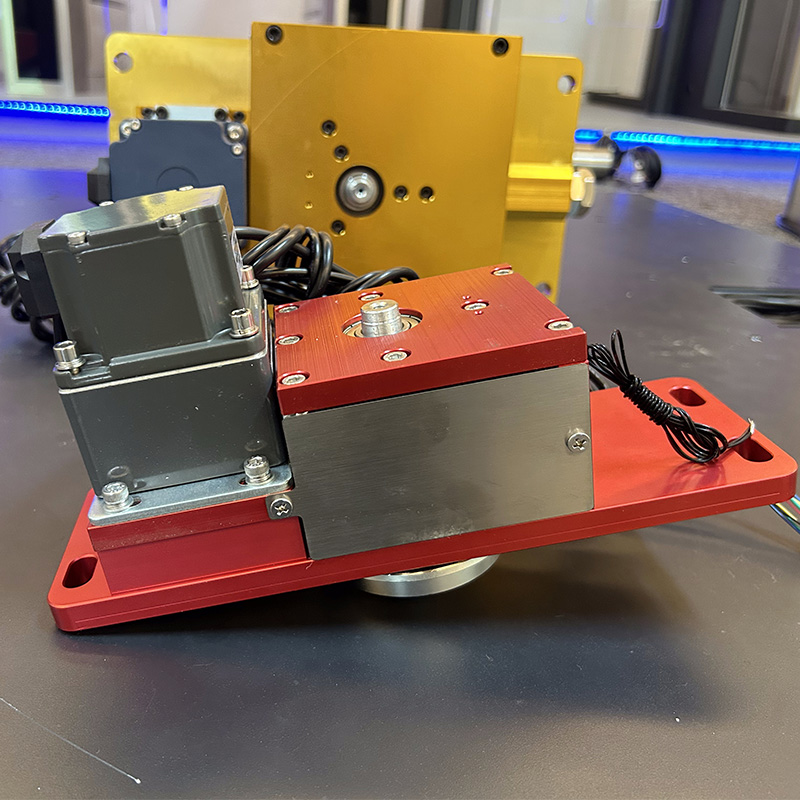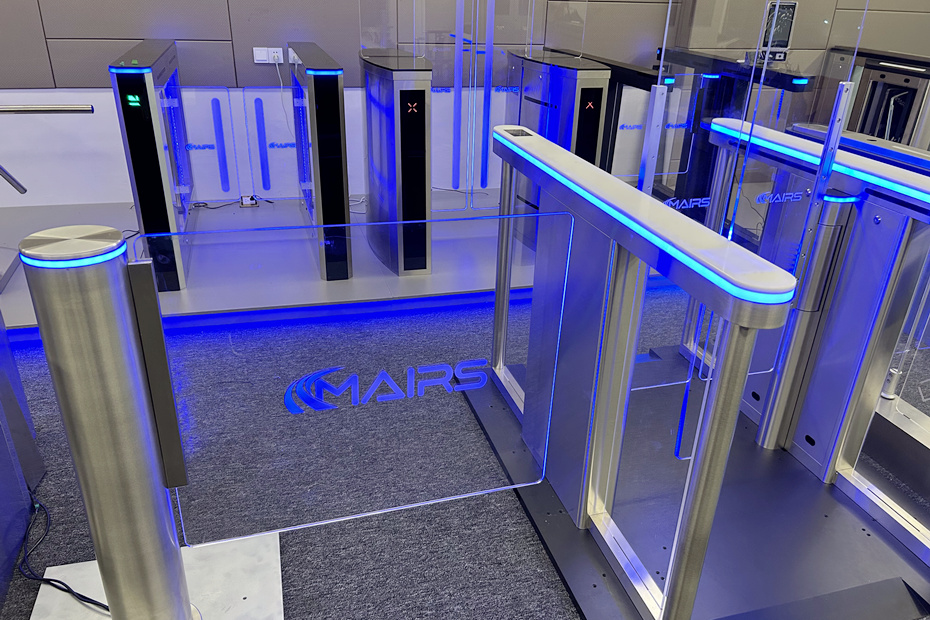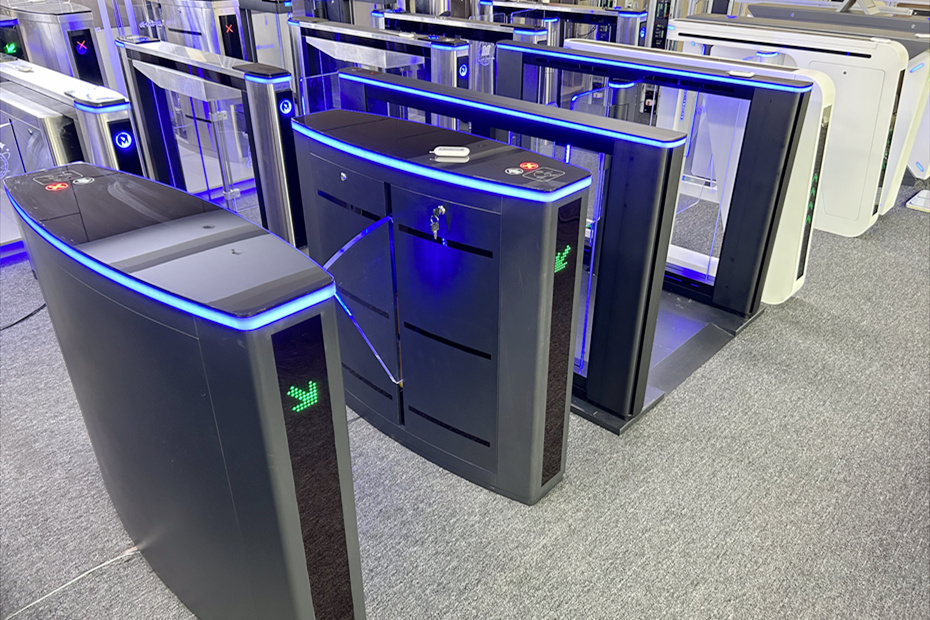Last updated on: June 9th, 2025 15:22 pm
Turnstile Mechanism Definition:
The turnstile mechanism is an integrated device comprising various mechanical components housed within the turnstile gate. The turnstile mechanism operates on mechanical principles to regulate the opening and closing actions of the turnstile gate’s blocking rod.
Similar to how the engine is the heart of a car, the turnstile gate mechanism serves as the heart of the turnstile gate. It stands as the core component, with the fundamental operations of the turnstile gate reliant on the turnstile mechanism. Turnstile gate mechanism controlling the turnstile gate by managing the swing of the rod arm, the turnstile gate mechanism is pivotal for achieving fast passage and anti-tailing functions in pedestrian turnstile gates.
The stability of the turnstile gate mechanism significantly influences the smooth and quiet operation of the turnstile gate, directly impacting the user experience. The overall quality and service life of the turnstile gate is inherently tied to the quality of the turnstile mechanism.
In recent years, the security market has experienced rapid growth, leading to the widespread use of turnstiles, such as tripod turnstile, swing turnstile, flap barrier turnstile, full height turnstile, sliding turnstile, and speed gate turnstile. While some customers may focus on aspects like turnstile appearance and turnstile gate price, the quality of the turnstile mechanism is crucial for users.
Customized Turnstile Mechanism:
We specialize not only in customizing turnstile mechanisms but also in tailoring various types of turnstiles to meet your specific needs.
The turnstile gate mechanism we employ boasts a robust structure and utilizes durable materials. It features a distinctive hydraulic buffer device designed to effectively absorb the impact force generated during the rotation of the gate. This mechanism serves to safeguard the internal structure, enhance the wear resistance of components, and minimize operating noise. By choosing our turnstile mechanism, you’re opting for a solution that prioritizes durability, functionality, and a quieter operational experience.
Mairsturnstile places significant emphasis on the quality and craftsmanship of the turnstile gate mechanism. By meticulously addressing every accessory and component, Mairsturnstile aims to create turnstile gate machines that are not only appreciated but also recognized by customers. Continuous improvement and structural optimization of the turnstile gate mechanism remain integral to enhancing product quality, with a primary goal of achieving 99% user satisfaction.
If you need a turnstile gate mechanism or want to customize a turnstile gate mechanism according to your actual needs, Please call us at: +86 1532-343-1686 or request a free estimate.
Types of Turnstile Mechanism:
The design and enhancement of turnstile gate mechanisms play a pivotal role in elevating the overall stability, quality, and user-friendly functions of pedestrian turnstiles. The turnstile gate mechanism mainly includes the following types:
Full height turnstile mechanism:
The full height turnstile mechanism is divided into a semi-automatic mechanism and a fully-automatic mechanism.
The semi-automatic full height turnstile mechanism controls the opening and closing of the machine through the solenoid valve. Through continuous improvement, the solenoid valve is equipped with a heat dissipation device, the service life is prolonged, the shock absorber is integrated, the collision sound is reduced, and the mechanical anti-reversal function is improved based on the electromagnet movement, which can realize the anti reversal and buffer functions;
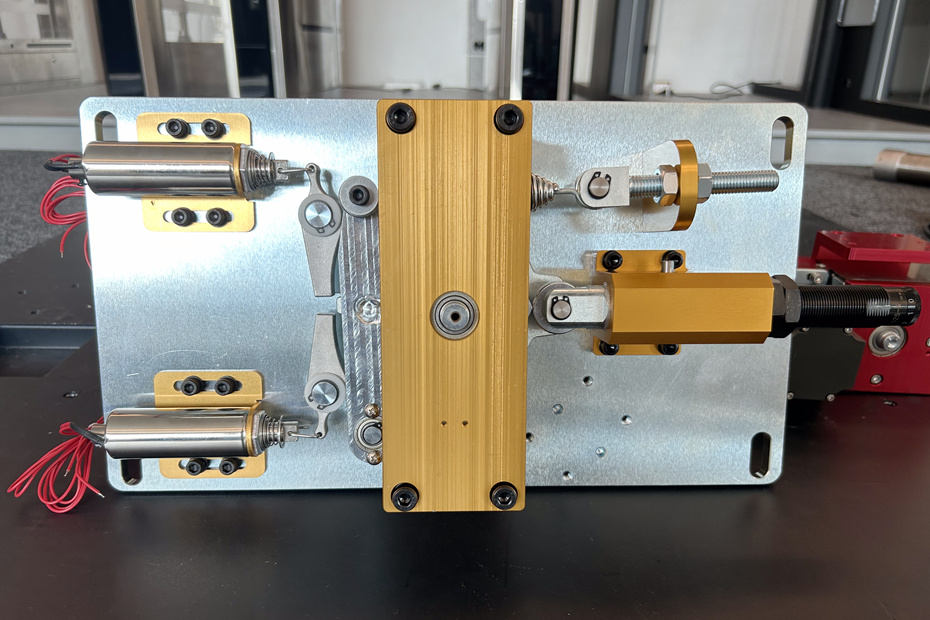
Its disadvantage is that there is a certain amount of noise. Because of its good performance and ultra-high cost performance, most of the full heights in the market currently use this semi-automatic type.
The fully automatic full height turnstile mechanism is realized by using the motor combined with the special-shaped grooved wheel structure. When passing, it automatically rotates forward at a certain angle, and people touch the blocking rod to pass. It is a brand-new product completed by using the industrial control processing method. During the whole product operation, the start and stop are very stable, and the braking and locking can be realized quickly. It is the first mute full height turnstile gate mechanism combined with multi-channel and multi-level sensors in the industry.
It has the advantages of no noise, stable operation, no mechanical wear, and long service life. Its disadvantage is that the cost is relatively high.
Tripod turnstile mechanism:
The tripod turnstile mechanism is available in both semi-automatic and automatic versions, offering users flexibility in choosing the model that best suits their needs.
The tripod turnstile mechanism mainly includes a motor drive device, a reduction device, and a sensor device.
1. Motor drive device: Responsible for powering the mechanism’s movement, the motor drive device typically consists of a DC motor and corresponding circuits. DC motors convert electrical energy into mechanical energy, facilitating the rotation of the tripod turnstile mechanism.
2. Reduction device: Comprising a reduction mechanism, its role is to decrease the motor drive device’s speed and increase torque, ensuring stable operation of the mechanism.
3. Sensor device: Used to detect the flow of people entering and exiting, the sensor device controls the switch action of the tripod turnstile mechanism. Commonly employing infrared sensors and photoelectric sensors, it detects human entry or exit and determines the turnstile gate’s status.
Flap barrier mechanism:
The flap barrier mechanism is the core component of the flap barrier turnstile, used to achieve the movement and control of the flap barrier gate.
The design and quality of the flap barrier mechanism directly affect the performance, safety, and service life of the flap barrier gate. Understanding the technical details and manufacturing quality of the flap barrier mechanism is a key factor in ensuring the selection of suitable products when selecting a flap barrier gate.
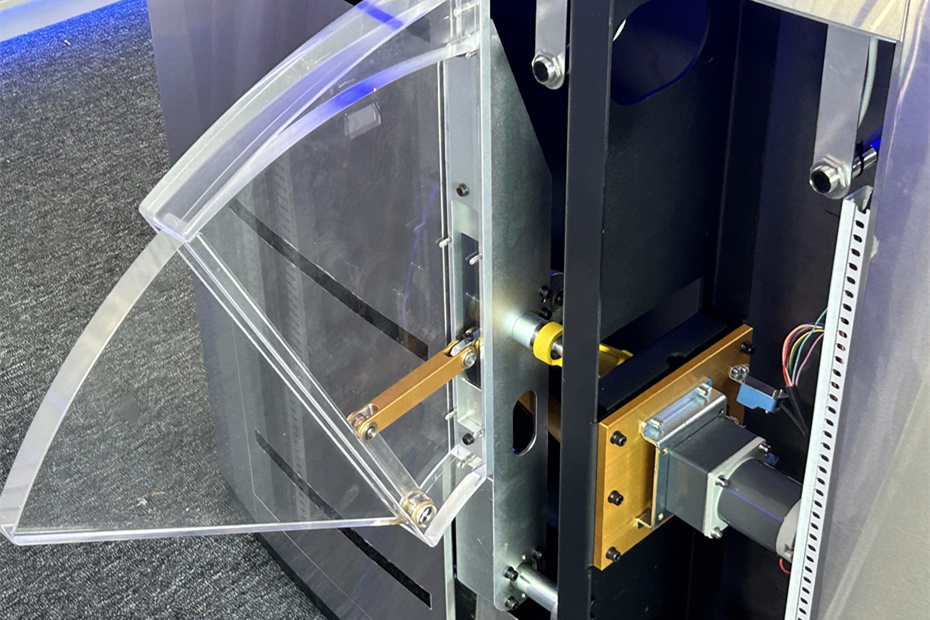
The flap barrier mechanism can be divided into a full-height mechanism and a half-height mechanism. The full-height mechanism is better than the half-height mechanism. The superiority of the mechanism largely determines the superiority of the same type of pedestrian turnstile gate. The stability and use effect of the full height mechanism is very perfect. The flap barrier turnstile produced by Mairs adopts a full-height mechanism, just to bring you the best traffic experience.
Swing turnstile mechanism:
The swing turnstile mechanism can be roughly divided into a brushless motor and a servo motor. The difference between a servo motor and a brushless motor lies in whether there is a commonly used brush commutator. The servo DC motor converts the current direction by touching the graphite brush with the annular commutator installed on the rotor. Swing turnstile using a brushless motor, the rotor position is transmitted to the control circuit through the Hall sensor, so that the accurate time of motor phase commutation can be obtained.
When the swing turnstile gate is equipped with a brushless motor, three Hall-effect positioning sensors can work at the same time. Because there is no brush, the brushless motor runs more stably, has no noise, the body will not shake, the friction between the swing arms and the chassis body is reduced, and has a longer service life than the brush motor.
Turnstile Mechanism Composition:
The turnstile mechanism primarily consists of electric motors, reducers, sensors, gear, and electromagnetic devices. Different types of turnstiles may adopt mechanisms of different designs and technologies to achieve specific functions and performance. These components are crafted not only from stainless steel but also undergo anti-oxidation processes like nickel plating to enhance wear and corrosion resistance.
Let’s introduce these main parts individually:
Electric motor: The motor is the main driving force in the turnstile gate mechanism, used to control the opening and closing of the turnstile gate. The type and power of the motor will affect the operating speed and stability of the turnstile gate.
Reducer: Reducers are usually used in conjunction with motors to reduce the speed of the motor, thereby increasing torque and ensuring smooth movement of the turnstile gate. The quality and design of the reducer play a crucial role in the durability and performance of the turnstile gate.
Sensors: Sensors are used to detect the arrival and passage of pedestrians, triggering corresponding actions. Common types of sensors include infrared sensors, ultrasonic sensors, etc. The accuracy and sensitivity of sensors are crucial for the safety and efficiency of turnstiles.
Electromagnetic device: Some gates are equipped with electromagnetic or mechanical locks to maintain the locking of the turnstile gate wings in the closed state. This helps to enhance the safety of the turnstile gate.
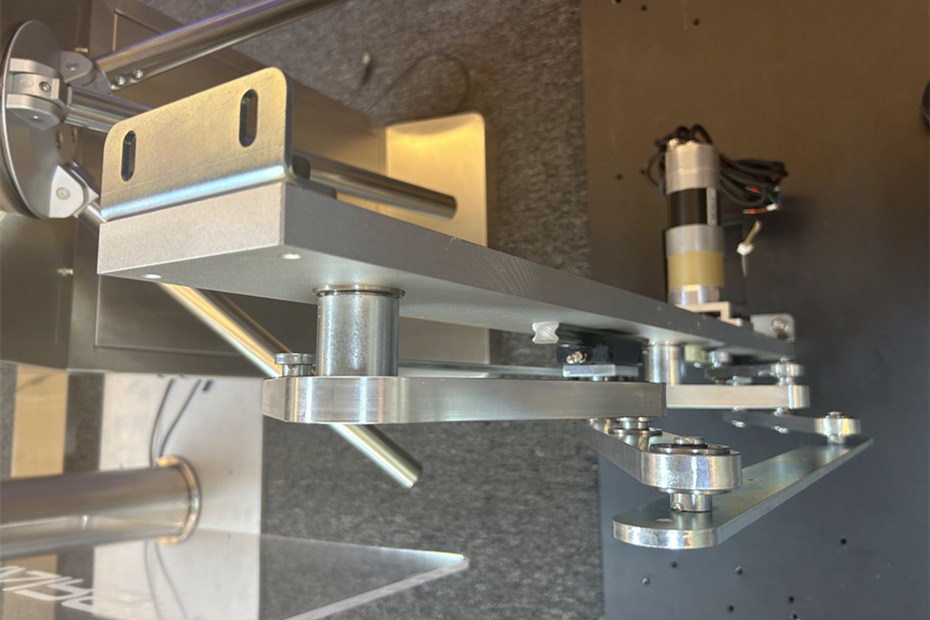
Function of Turnstile Mechanism:
The turnstile mechanism serves various crucial functions, encompassing the control of turnstile gate opening and closing actions, the detection of passage status, and more. Specifically, its key functions include:
Control the turnstile gate: The turnstile gate mechanism controls the opening and closing of the turnstile gate by driving an electric motor, ensuring effective passage control.
Enhanced Service Life of turnstile gate: Featuring shock absorption and impact reduction functions, the turnstile gate mechanism minimizes vibration in the turnstile machine, thereby extending its service life.
Understanding the composition and functions of the turnstile mechanism is instrumental in evaluating its value, and enhancing the safety, and reliability of the turnstile system.
Mechanism Quantity:
The turnstile gate can be configured with either one or two mechanisms, and the choice of mechanisms determines the function and placement of the turnstile gate.
When a turnstile gate is equipped with one mechanism, it is referred to as a single-core turnstile. Conversely, a turnstile gate equipped with two mechanisms is termed a dual-core turnstile.
Combining two single-core turnstiles forms one turnstile gate passage, while a dual-core turnstile, along with two single-core turnstiles, creates two turnstile gate passages. Further, two dual-core turnstiles and two single-core turnstiles can generate three turnstile gate channels, and so forth.
This configuration offers potential budget savings if designed accordingly. However, in scenarios where two entrances and exits within the same office space require two passages, using four single-core turnstile machines becomes necessary, with two single-core turnstiles combined to form one turnstile passage.
In essence, a single-core turnstile gate is suitable for both single-channel and multi-channel applications, while a double-core turnstile gate is designed for multi-channel use. This choice is independent of one-way or two-way traffic, as traffic direction is established through settings rather than the number of turnstile gates.
Routine Maintenance:
The performance of the turnstile gate mechanism is crucial for ensuring safety, long life, stability, high-speed opening, high-speed stopping, and ease of maintenance. Therefore, attention to turnstile gate mechanism maintenance is essential to enhance product service life.
Failures in the turnstile gate are often traced back to issues with the turnstile mechanism. Ensuring correct usage and proper maintenance is key to guaranteeing the turnstile gate’s service life and enhancing its overall longevity.
Regular Maintenance Method:
Cut off the power supply.
Open the swing barrier gate machine cover and clean the surface dust.
Start by cleaning the transmission parts.
Apply lubrication, particularly to the swing barrier gate entrance guard gear and wheel slot, ensuring proper coating with butter.
Regular Check Items:
Inspect each fastener and connecting rod for signs of looseness.
Tighten any loose components to maintain structural integrity.
Breakable Parts Maintenance:
Examine breakable parts for wear, specifically checking the swing barrier gate positioning arm and positioning disc. If the clearance exceeds 3 mm, consider timely replacement. The normal clearance should be maintained between 1-1.5 mm.
Apply an appropriate amount of butter to the solenoid valve spool to reduce resistance during left and right movements. Avoid excessive lubrication; a moderate amount is sufficient.
Limit Switch and Limit Plate Caution:
Exercise caution when dealing with the swing barrier gate limit switch and limit plate. Avoid casual adjustments to prevent errors.
Ensure that the limit switch and limit plate are not set too far or too close, as improper adjustments can lead to operational errors.
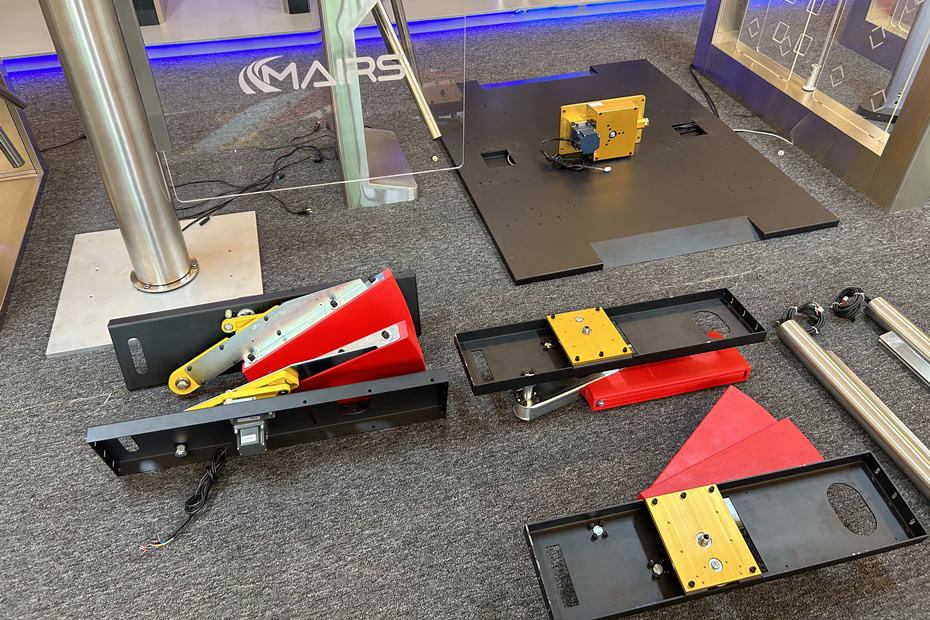
By adhering to these maintenance guidelines, you contribute to the overall safety, longevity, and optimal performance of the turnstile gate mechanism. Regular checks and timely interventions will help prevent issues and ensure smooth operation.

